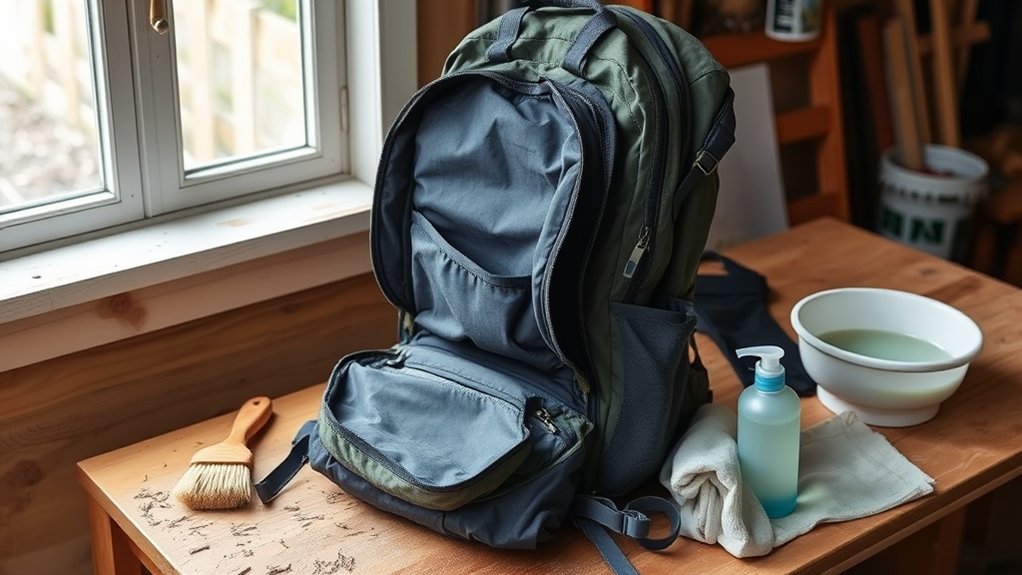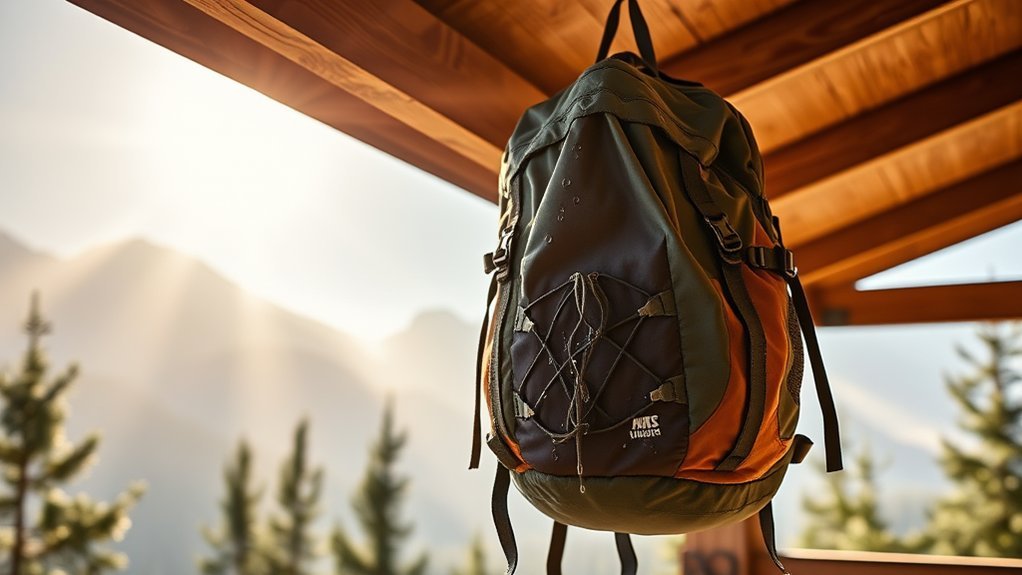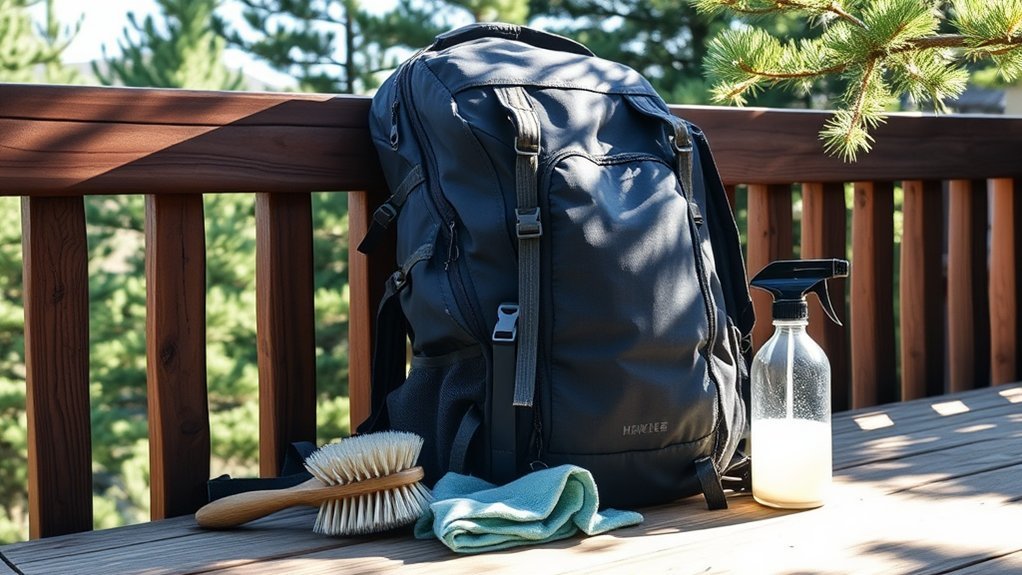Hey trail seekers! Let's talk about cleaning your hiking buddy – that trusty backpack that's been through mud, rain, and maybe a few unexpected trail snacks that didn't quite make it to your mouth. Real talk: nobody loves scrubbing gear, but I've learned the hard way that a clean pack makes for better adventures. After 15 years of hitting trails from deserts to rainforests, I can tell you that spending just a few minutes cleaning your backpack will keep it solid for years of exploring. Whether you've got pine sap stuck in the zippers or mystery mountain gunk on the straps, I'm going to break down exactly how to get your pack back to its glory days. No fancy techniques, no special products – just straight-up practical methods that actually work. Ready to transform that dirty pack into something that doesn't make your hiking partners walk upwind from you?
Why Regular Backpack Cleaning Matters
Regularly cleaning your hiking backpack might seem like a tedious task, but it's absolutely essential for keeping your gear in top condition. When we're out on the trails, our packs collect sweat, dirt, and bacteria that can lead to unpleasant odors and deterioration over time.
We've found that backpacks need a good wash about twice yearly, especially after intense adventures like thru-hikes or at season's end. Don't wait until that funky smell becomes unbearable – it's much harder to remove once it sets in. By staying on top of cleaning, particularly in high-contact areas like shoulder straps and hip belts, we're not just protecting our investment. We're also ensuring our pack stays comfortable and fresh, making every future adventure more enjoyable for ourselves and our fellow hikers.
Essential Cleaning Products and Tools
To get your hiking backpack truly clean, you'll need three essential cleaning products and a few basic tools. Let's start with the star player – Nikwax Tech Wash, which is perfect for maintaining waterproof materials. We'll also need lukewarm water (not hot, as that can damage your pack) and a sturdy microfiber cloth for thorough scrubbing.
For quick refreshes between deep cleans, keep Tide Antibacterial Fabric Spray handy – it's great for fighting odors when your pack isn't too dirty. As for containers, while a bathtub works well, you can also use a large plastic tub. These simple tools and products will help maintain your pack's performance and extend its life, keeping you ready for your next adventure on the trail.
Pre-Cleaning Inspection and Preparation

Before diving into the cleaning process, you'll want to carefully examine your backpack for any damage or problem areas that need special attention. Check the shoulder straps for fraying, inspect all zippers, and look for any tears or loose stitching that might need repair before we wash your backpack.
Let's make this a simple process by emptying every pocket and compartment completely. Turn the pack inside out if possible, and give it a good shake to remove loose dirt and debris. Remove any detachable components like hip belts or frames – we'll clean these separately.
Use a soft brush to sweep away any stuck-on dirt, paying special attention to seams and corners where trail grime tends to collect. Don't forget to empty and check those hidden pockets!
Deep Cleaning Process and Techniques
Once your backpack is prepped and ready, we'll start the deep cleaning process using lukewarm water and a gentle cleaning solution. Let's fill a bathtub or large sink with water and add a few drops of mild soap. We'll gently scrub the fabric with a soft brush, paying extra attention to those grimy spots and tough stains.
For machine-washable packs, we can use the washing machine on a gentle cycle with cold water. Just remember to place your pack in a mesh bag or pillowcase to protect the straps and zippers. Whether hand-washing or machine-washing, we'll thoroughly rinse the backpack until the water runs clear. Don't forget to carefully clean the inside compartments and get into those hidden corners where dirt loves to hide.
Drying and Waterproofing Methods

The proper drying and waterproofing of your hiking backpack plays a crucial role in extending its lifespan. After cleaning, we'll want to hang it upside down in a well-ventilated spot, away from direct sunlight. Never use a machine dryer, as the heat can damage the fabric and components.
| Drying Tips | Waterproofing Steps | Maintenance |
|---|---|---|
| Open zippers | Clean thoroughly | Check seams |
| Remove parts | Apply spray evenly | Store cool |
| Air dry | Test small area | Spot clean |
Once your pack is completely dry, it's time to assess if it needs waterproofing. We recommend checking after a few years of use. Before applying waterproofing spray, make certain the pack is clean and dry – never use hot water in the cleaning process, as this can harm the materials.
Storage and Long-Term Care Tips
Proper storage practices extend your backpack's life far beyond basic cleaning and waterproofing. While you should never machine wash your pack, feel free to store the backpack by either hanging it up or laying it flat in a well-ventilated space. This prevents unwanted mold and keeps your gear in great shape for future adventures.
Check on your pack every now and then to make sure it's staying dry and maintaining its form. We recommend applying a fresh coat of waterproofing spray every couple of years to keep the fabric resistant to rain and moisture. Always follow what your pack's manufacturer suggests for specific care – they know their gear best and want to help you make it last through countless trails ahead.
Quick Refresh Options Between Deep Cleans

Several quick refresh methods can keep your hiking backpack smelling fresh between deep cleanings. We've found that Tide Antibacterial Fabric Spray offers a fantastic "stop, spray, and go" solution when you don't need to fully wash your hiking backpack. Here's a clever way to test it: spray just one strap and compare it to the untreated one after 25-30 minutes. You'll notice the difference!
This method works great for lightly soiled packs that aren't ready for a complete wash but need a quick odor fix. Just remember to avoid direct sunlight while the spray dries. It's perfect for those busy times when you're planning back-to-back hikes and need your pack ready to hit the trails again quickly.
Frequently Asked Questions
How Do You Clean and Deodorize a Backpack?
Let's hand-wash our packs with gentle soap, use odor reducing liners, and apply water repellent treatments. We'll guarantee proper air circulation techniques by hanging them upside down while drying.
Should You Wash a Backpack Open or Closed?
Want your backpack to last? Let's start with open zippers for deep cleaning, then close them halfway through. It's the perfect balance for proper storage technique, ventilation considerations, and effective drying procedures.
What Cleaning Solution for Backpacks?
We'll get your pack clean with Nikwax Tech Wash or mild soap mixed in warm water. Add OxiClean as an odor eliminator, then finish with TX Direct to restore water resistance.
How Do You Clean a Backpack Without Damaging It?
Let's gently brush off dirt, use mild detergent with lukewarm water, inspect for damage, and air dry thoroughly. Don't machine wash! We'll finish with proper storage methods to maintain your pack's durability.
Conclusion
Keeping your hiking backpack clean isn't rocket science – it's just smart trail sense. After spending countless days out in the wild, I've seen how dirt and grime can sneak up on even the toughest gear. Following these cleaning steps will keep your pack ready for action, prevent funky smells, and stop wear and tear in its tracks. Plus, you'll always know exactly what's lurking in those forgotten corners (goodbye, ancient trail mix!). Don't wait until your pack starts showing signs of neglect – grab your supplies and give it a good clean today. Your future self will thank you when you're hitting the trails with fresh, reliable gear.